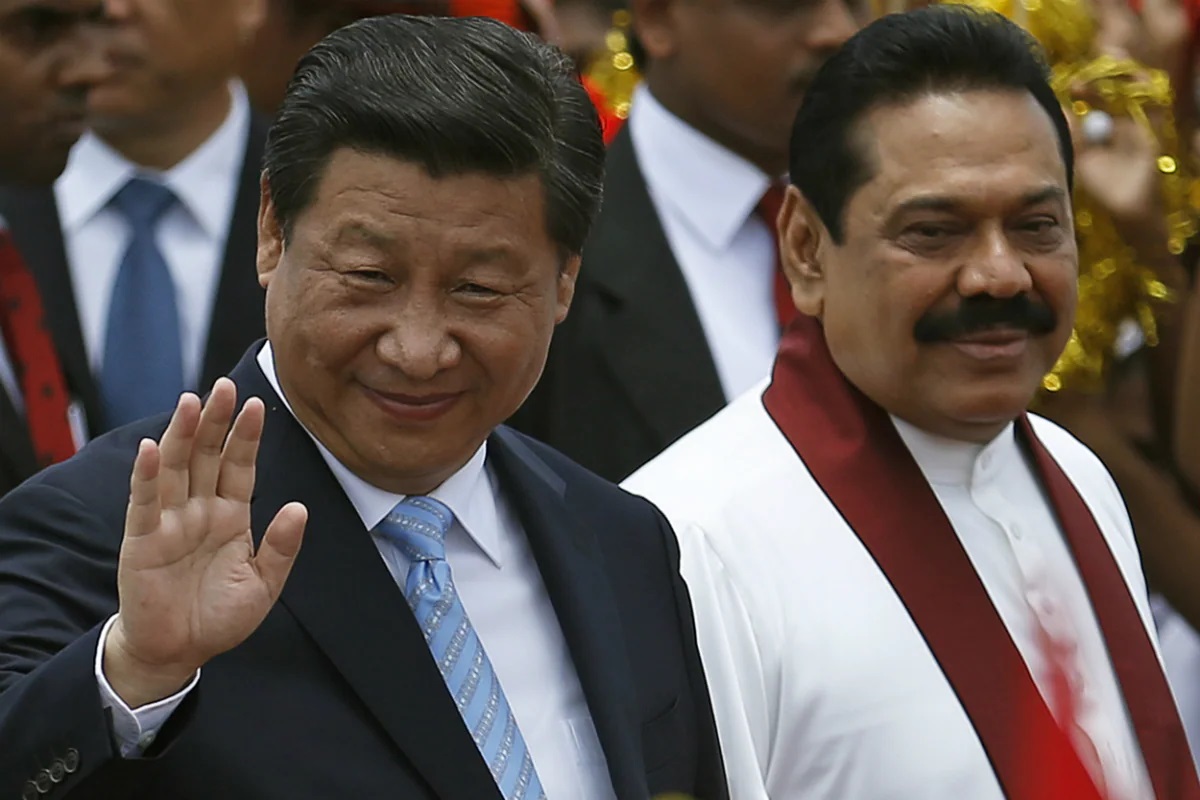Sri Lanka a tiny island country in the Indian Ocean has become an example of what Chinese investments can achieve. In the last two decades Sri Lanka has received around 15 billion in investments from China, making it one of the largest investors in the island nation. Sri Lanka has also joined the Chinese Belt and Road Initiative (BRI) launched by President Xi Jinping in 2013. The major wake up call to these investments came when Sri Lanka was unable to repay the loans and it had to lease out the Hambantota port to China for 99 years. There are reports which suggest that this can be extended by another 99 years. Such an outcome gave further strength to argument of ‘debt trap’ which accompany the Chinese loans and investments.
The year 2022 has further complicated the situation in Sri Lanka. It defaulted on its foreign loan repayments which is the result of the ongoing economic crisis. There are massive power shortages, and to add to the woes the people are suffering from food scarcity, medicines and also fuels. Inflation is at all-time high, and the prices of essentials have been rising. On April 1, 2022, Sri Lanka President Rajapaksha declared a state emergency only to be forced to withdraw it after massive protests from citizens.
Though, the ongoing crisis can be attributed to the domestic tax cuts and slump due to the Covid 19 pandemic. Sri Lankan economy is heavily depended on tourism and the Covid 19 pandemic has hit it hard. With almost no revenues coming in through tourism the Sri Lanka economy has struggled to survive. Reports suggest that Sri Lanka has asked IMF for a bailout 16 times since independence. The obvious path from here is that Sri Lanka is in need of another bailout.
To add to this the existing Chinese loans have further aggravated the situation. Beijing has been dragging its feet on the question of trying to help Sri Lanka. Finally, it announced that it will be extending emergency grants of 76 million dollars in order to support Colombo, an amount which is too small to actually help in any substantial way. However, one also needs to understand that Beijing is also facing financial limitations and is still on the path of recovery after the Covid 19 pandemic. Chinese manufacturing sector has suffered as a result of the global economic slowdown. Also, Colombo has been too close to Beijing and has been adopting Chinese path of economic growth. An economic collapse will directly question the feasibility of following the Chinese model of growth.
In such a situation, one logical alternative for Sri Lanka is India. Sri Lanka is looking at New Delhi to provide some assistance and India has stepped up. Recently, India has extended a credit line of 1.5 billion dollars to Sri Lanka to help the country to be able to buy necessities. This was announced during Foreign Minister S Jaishankar’s visit to Sri Lanka in February 2022. Though, India may not have deep pockets like China, it needs a stable Sri Lanka and India has extended around 3 billion dollars to help Colombo since January 2022. Sri Lanka is India’s close neighbour, and they have strong people to people contacts. Any instability in Sri Lanka tends to have a strong impact on Indian domestic politics. Also, it will not be far-fetched to guess that this may intensify the flow of refugees from Sri Lanka to India. However, New Delhi will have to deliver on its promise on time.
Sri Lanka has become central to the geostrategic ambitions and expectations of China and India. China has been consistently working towards gaining a strong foothold in the Indian Ocean region, and Sri Lanka provided Beijing this very opportunity. Colombo forms an important step in Chinese ambitions of having a strong naval presence in the Indian Ocean region and Hambantota may help China achieve this dream. China has also addressed its unease and unhappiness with the name ‘Indian’ Ocean region asserting that it is not India’s Ocean. Beijing has always been concerned about the Indian naval strength in the region and has been suffering from the ‘Malacca Dilemma’. Most of Chinese resources flow through this region and it has always worried China that India can use its influence and strength to block the flow.
India considers South Asia as its natural sphere of influence, geographically as well politically. India is one of the largest countries, economically and militarily in the region. India is also an important player in the Indian Ocean region. The rising Chinese presence has been a cause of concern for India. New Delhi has been involved in the development and aid of the countries in the region, but it does not have the capability to counter the Chinese deep pockets. Given its own domestic concerns of growth and development, the primary focus will continue to be domestic.
However, the current economic crisis in Sri Lanka calls for renewed focus on the Chinese aids and investments in smaller nations. Should the smaller nations be more cautious about accepting the loans and also look at how feasible they are? Do these investments actually benefit the smaller nations in generating employments and revenues? The fact that China is ready to extend loans without concerning itself about the capacity of the receiving nations to repay them has proved attractive to the smaller countries like Sri Lanka. But what will be the outcome if they are unable to repay the loans is something which is becoming a lesson in process. The smaller nations have had to compromise on their sovereignty and the Sri Lankan situation highlights that China is ‘generally’ not concerned about the domestic situations in the other nations, its primary concern being gaining as much as it can in exchange for the loans.
One can only conclude, though the Covid 19 pandemic did accelerate the situation in Sri Lanka, it can be an important lesson for countries keen to welcome the Chinese investments and loans. Beijing extends loans with strong focus on safeguarding its own position and Chinese loans are generally accompanied by Chinese workers and Chinese military presence, given the fact that it is a mandate of the Chinese army to safeguard Chinese investments abroad. Given this backdrop, the Chinese loans and investments should be welcomed with a huge caution.
(The paper is the author’s individual scholastic articulation. The author certifies that the article/paper is original in content, unpublished and it has not been submitted for publication/web upload elsewhere, and that the facts and figures quoted are duly referenced, as needed, and are believed to be correct). (The paper does not necessarily represent the organisational stance... More >>
Image Source: https://images.news18.com/ibnlive/uploads/2020/10/1603003175_jinping-mahinda-rajapaksa.jpg?im=FitAndFill,width=1200,height=1200










Post new comment